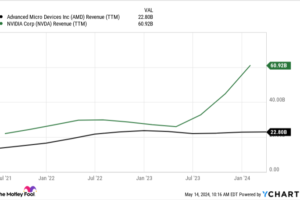 iStockphoto
iStockphoto
The numbers: Builders started new homes at a pace of 1.269 million in May, the Commerce Department said Tuesday, above MarketWatch expectations for 1.23 million starts, but down on April’s pace and down 4.7% on the same month last year.
They applied for permits at a seasonally adjusted annual 1.3 million rate, better than April’s rate and compared to estimates for 1.3 million.
What happened: Starts, a measure of builders breaking ground on new homes, were 0.9% lower than in April and 4.7% below the pace set a year ago. Permits, which foreshadow future starts, were 0.3% higher for the month but 0.5% lower than May 2018.
The government’s reports on new-home construction and sales are collected from small samples, and can be volatile. Revisions to prior months’ data were all upward in May, painting a more positive picture of the housing market than previously seen. For the year to date, though, starts are 3.0% lower than during the same period last year, a more reliable picture of what’s going on than in any one single month.
Read: Americans are driving until they qualify again, and builders are responding
Single-family starts sank in May to a 820,000 pace, though as with the headline numbers, prior months’ data were revised up. When builders construct houses, rather than apartments, it signals more confidence in the economy and consumer demand for ownership, not renting.
Big picture: Demand is strong but the industry isn’t stepping up to meet it. A measure of builder confidence was unexpectedly weak in June, and some analysts think the threat of Mexican tariffs took a toll.
What they’re saying: Commentary after the report was released and research conducted before it all pointed to a stronger outlook for the housing sector than this data suggest.
“Single-family permits usually track new home sales but are lagging behind, either because homebuilders doubt the recent revival in sales will last – we think it will – and/or because they have too much inventory still after the disastrous drop in sales in Q4 last year,” said Ian Shepherdson, chief economist for Pantheon Macro. “If we’re right, and new home sales rise in the second half of the year, new construction will follow.”
“Consider this,” wrote Freddie Mac economists in December. “From 1968 to 2008, a span of 40 years, there was only one year in which fewer new housing units were built than in 2017 —and this despite rising demand in a growing economy.” The Freddie analysts believe the cumulative shortfall of new homes for sale after years of under building is as high as 4 million.
Market reaction: The yield on the U.S. 10-year note TMUBMUSD10Y, -2.68% , which fixed-rate mortgages track, has tumbled this year. That’s great news for would-be borrowers, but sets an uneasy tone for financial markets.
See: Four years, $13 million and dozens of hands: How ‘affordable housing’ gets made in America















Add Comment